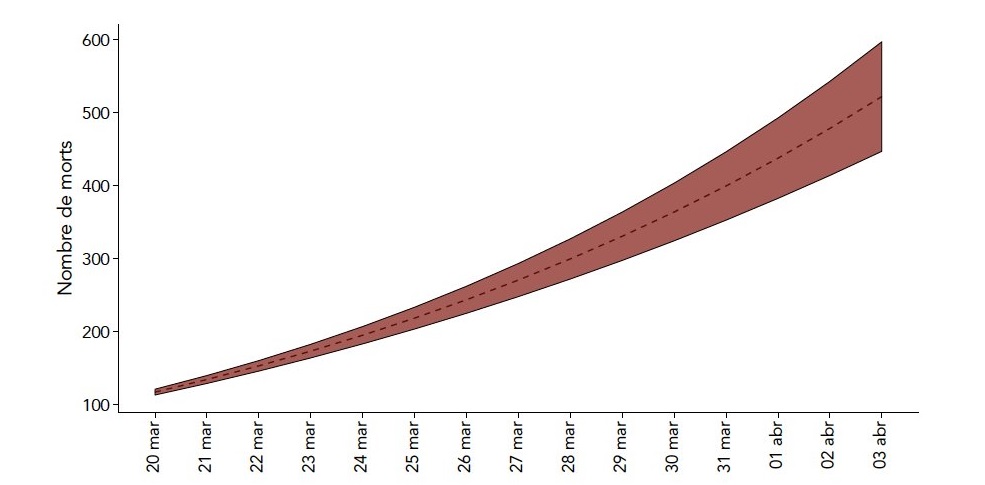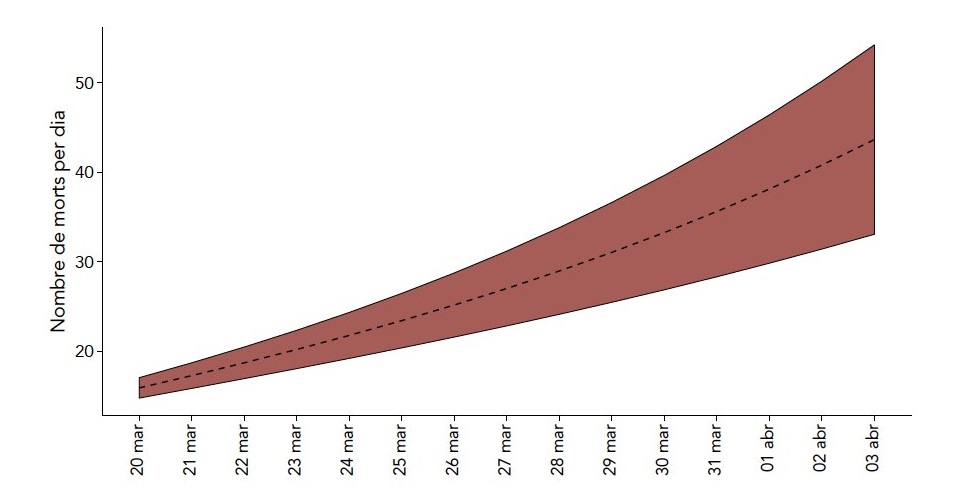23/03/2020
The city of Barcelona will have 600 deaths from coronavirus in less than two weeks
This estimation has just been made using the mathematical model designed by URV researchers and Unizar if current mobility is maintained. Portugal, Brazil, Argentina and Uruguay have already got in touch with the research group to request data on the spread of the virus in these countries

This estimation has just been made using the mathematical model designed by URV researchers and Unizar if current mobility is maintained. Portugal, Brazil, Argentina and Uruguay have already got in touch with the research group to request data on the spread of the virus in these countries
If the present mobility situation is maintained, which is about 40-45% with no restrictions, Barcelona will undergo an exponential growth in deaths from coronavirus that could reach the figure of 600 by 3 April. These figures have been produced by the mathematical model designed by researchers from the Universitat Rovira i Virgili and the University of Zaragoza, and which they have been working on for several weeks. The aim of the algorithm is to make predictions about the advance of the disease, warn the authorities about the need to take measures to contain the spread of the virus and prevent the collapse of the health system.
This new estimation, calculated in response to a request from the Department of Health of the Catalan Government, has been made using the figure of expected cases, the percentage of those that will need to be admitted to the Intensive Care Unit and the mortality rate of the most severe cases.
The results obtained reinforce the message that researchers have been sending to the authorities for some days that the general public needs to be subject to total confinement. “The virus is spread because we are in contact with others. We need to stop the chain of transmission so that the number of contacts made by every individual stays below 4,” insists Àlex Arenas, principal investigator of the project. “The partial mobility that we have at the moment slows down the spread but does not stop it. Only by staying at home will we begin to have places with healthy people who will stop fuelling the epidemic.”
The increase in the number of case is complicating the adoption of effective prevention measures because the more infections there are in a particular population the more difficult it is for the containment to work. This means that the contagion curve will not sufficiently flatten and that the hospitals will be subject to more and more stress. “It is clear that if total confinement is not possible, at least the main foci must be isolated. At the present time these are Madrid, the Basque Country, Catalonia, Castile La Mancha, and Castile and León.”
A manifesto demands total confinement
Arenas and his team have signed a manifesto alongside some seventy other scientists from various disciplines involved in the study of the pandemic throughout Spain. The document warns of the danger that on 25 March the health system could enter into meltdown. Scientists insist that the measures taken so far have not been sufficient to halt the growth curve of the disease and they demand the total confinement of those areas where there are more than 25 cases of infection per one million inhabitants.
The manifesto only aims to reveal the results of the model that predict what will happen if the present conditions prevail. “It is not an opinion. They are scientific findings,” insists Arenas, who is convinced that total confinement “will be a decision that will have to be taken eventually so the sooner the better.”
In response to those who criticise the manifesto, Arenas wants to make it clear that this is scientific evidence. “So far none of the predictions have failed. We are not giving our opinion and we are not involved in politics. We are being overwhelmed by a pandemic. We bring the numbers to the table and we describe the most favourable scenario if the criterion is to save as many human lives as possible.”
Are we in time to prevent collapse?
If more restrictive measures are brought into force and the population is subject to total confinement, could we prevent the collapse of the health system? “In some regions we would be in time, but in cities such as Madrid this is now impossible, even though the scenario has improved now that more beds have been provided and more respirators found,” laments Arenas. The next place where the health system may collapse, according to the mathematical model, is the Basque Country and then Catalonia, with Barcelona in the forefront. The advantage of this model is that it is dynamic and it adapts to the measures that are taken. So, the results could vary if the number of beds available increases and people stop going out. “But the present measures are not sufficient,” he says.
Portugal, Brazil, Argentina and Uruguay have taken notice of the model
The mathematical model developed by this group of eight researchers has aroused the interest of the authorities in Portugal, Brazil, Argentina and Uruguay, who have asked for a prediction of the risk of spread in these countries. To do so, the group has used the same parameters that they used to draw up the map of risk of the spread of COVID-19 in Spain: data on mobility and the origin of the people infected in real time.
The model, then, can be extrapolated and the researchers aim to give support whenever necessary. “We have responded to the requests for help that we have received so far from the Catalan Government and the Valencian Government.”
More news about: Coronavirus


